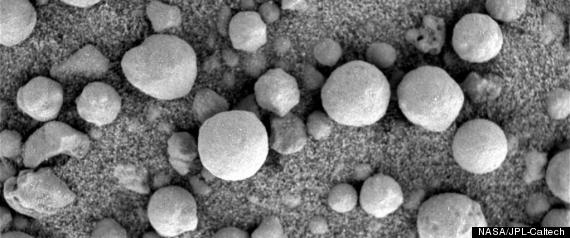
It's a question that has plagued scientists for decades: Is there, or has there ever been, life on Mars?
While the answer to that question has often swayed from a slight "maybe" to a definitive "no," the recent discovery of iron 'blueberries' -- small, spherical hematite balls -- by the NASA Opportunity Rover indicates that life may have existed on Mars millions of years ago.
These 'blueberries,' as they have been dubbed, were initially thought to provide evidence of water on Mars, according to LifeScientist. However, researchers from the University of Western Australia and the University of Nebraska found that similar iron-oxide spheres analyzed on Earth are formed by microorganisms. If the same holds true for Mars, the iron 'blueberries' could not have plausibly been created without the existence of microbes on Mars.
Published in the August issue of Geology, the study analyzed the bio-signatures of iron 'bluberries' found here on Earth on beaches and deserts such as the Jurassic Navajo Sandstone in Utah. Using a high resolution microscope, the researchers evaluated the apparent connections in the iron-oxide spheres, noting a particular relationship between microbe-like forms and biological elements.
Though previous theories surrounding the iron 'blueberries' suggested they were formed by chemical reactions, this new analysis indicates microorganisms were a crucial part of their formation. Thus, the evidence indicates that water, and life, once existed on the red planet.
Despite a recent study that suggests magma, rather than water, may have formed some of the deposits on the planet, the new research reinforces the theory that water was present on the Red Planet. However, more research is still required to further the theory of life on Mars.
No comments:
Post a Comment